|
Author : Historian Angelo Bissessarsingh ( HMG) Did you know that Plum Mitan Village on the east coast of Trinidad owes its name to a plantation that existed in the area in the 19th century?Some argue about the prevalence of plum trees in the area being the origin of the name, but this is yet to be proven. Archaeological evidence suggests that as early as 650 AD the vicinity was populated by Kalinago-esque peoples who left their remains scattered throughout the hillsides which comprise the main settlement. This part of Trinidad was largely forested (and heavily) for much of the 19th century. An odd group of settlers came to the area in 1816. They were black soldiers who had fought for the British in the War of 1812. Former slaves who turned on their American masters, they were promised freedom and parcels of land. These veterans were given their due lands in isolated and forested areas to separate them from the slaves in Trinidad who might have taken their presence as an inspiration to struggle for freedom themselves. Several of these veterans were still alive in 1884 when Sir Louis De Verteuil wrote:
“The settlements of Cuare, Turure, and la Ceyba were formed, in the year 1816, of disbanded soldiers from the first West India regiment. These settlements, or villages, ranged along the banks of the rivers bearing their respective names, and the soldiers were located thereon, with a grant of sixteen acres of land to each man. They were placed, to a certain extent, under the supervision of their serjeant, who was allowed a larger and more convenient dwelling, on condition of admitting travellers to a temporary lodging, when requested so to do. Some of the locations also bordered along the road leading to the eastern coast, with a view, it seems, to keep that line in good repair, as well as to place labour within the reach of the neighbouring proprietors of estates ; but the experiment proved a complete failure the King's men (as they called themselves) being too proud to become day-labourers. In the year 1849, after the passing of the Territorial Ordinance, the lands of these and other settlers were surveyed, and fifteen acres granted, free, to each settler or his descendants ; but the lands of Cuare, la Ceyba, and Turure being of the very worst description, the occupants will be soon compelled to give up their property particularly as the tax is levied on the land, irrespective of its quality. Cacao, a little coffee, and provisions are the only productions. The cacao plantations are along the rivers Oropuche and Matura, and the article is brought to Arima on mules. The Oropuche is a fine stream, but is not accessible to craft, in consequence of the heavy surf which breaks all along the Matura shore, and of the bar at its mouth : this river is also noted for the quantity of huillias, or water-boas, it contains.” The village was one of those which sprang up in the wake of a massive spike in the price of cocoa in the 19th century which caused an economic boom. Many forested lands on the east coast were opened up to plantation activities and the town of Sangre Grande emerged as the market center. Hitherto, produce had to be transported to Arima as Sir Louis had noted. The boom was also due to land reforms introduced by governor Sir A.H Gordon in 1867 which allowed peasant proprietors to purchase crown lands at nominal rates thus creating a strong and independent farmer class. Many of these small proprietors were ex-indentured labourers from India who had served their five and ten year contracts on sugar plantations along the east coast such as in Mayaro and as far afield as Tacarigua. They used their meager savings along with bonus money (an incentive to settle in the island that was offered from 1866-80) to acquire five and ten acre parcels which they speedily transformed into cocoa estates. The area was also known for its extensive stands of mora trees and this valuable timber provided a living for many of these early Indo-peasants who culled the trees, sawed them and then sold the lumber in the booming construction industry. Much of this wood was lugged to the coast at Manzanilla and the mouth of the Lebranche River. From the 1850s onward, a weekly steamship service connected the remote coastal depots of the island to Port of Spain. This was vital for the communities like Plum Mitan that relied upon it for mails and goods because it was not until 1898 when the Trinidad Government Railway opened a spur-line to Sangre Grande, that a viable form of transport came into being. Even so, the road connecting Plum Mitan was very very bad indeed. It was dusty in the dry season and a sea of mud in the wet. L.O Innis, a venerable old Trinidadian , wrote about journeying from Port of Spain on foot to visit his father at Mayaro and somewhere in the forested area near Plum Mitan, allegedly seeing a hat lying in the path. Upon lifting the hat he was to discover a person underneath who had sunk into the mud. This story, though humorous, is a highlight of the challenges of rural communities in the period. There were no services to Plum Mitan except the establishment of a primary school by the Rev. Dr. Harvey Morton around 1904. Rev. Morton was the son of the Rev. John Morton who in 1868 founded the Presbyterian Church’s Canadian Mission to the Indians (CMI) which was the catalyst that signaled the removal of the Indian from the sphere of the cane -field to aspire to the highest ranks in the island. A bus service connected the village to Sangre Grande as early as 1912, being one of the earliest in the island. Several tradesmen in Sangre Grande plied delivery vans (horse-drawn) to the village before the cocoa market crashed in 1920 and thus Plum Mitan had daily consignments of fresh bread, ice and aerated water. There was at least one shop owned by a Chinese merchant. The collapse of the world cocoa market plunged the village into some hardship which saw the waning of the plantations and a turn to mixed cropping among the peasants. One of the quirky and colourful characters of the period was planter G.A Farrell who owned El Recuerdo Estate which was the largest single plantation in the district. Farrell was something of a genius and in addition to experimenting with agricultural science, also built (and wrecked) what must have been the first aeroplane in Trinidad as was described in 1910: “The roads are fairly graded and were surmounted without difficulty, and at the bottom of the long descent from these hills, lay El Recuerdo, about 2 miles from Manzanilla beach, my resting place for the night. The house is prettily situated on a ridge, nearly 100 ft. above the level of the King's Highway, which has been carefully leveled, round edged, and terraced. The " coupd'oeil" that presented itself at dawn next morning when I went outside the house, was truly picturesque. Each terrace was lined with a wealth of plants of all kinds, palms, crotons, colei, canna, dracenas, roses, begonias, all too numerous to recapitulate, and G. A. F. assured me that they had all been originally planted from slips just placed in the ground, and not from rooted cuttings, proof positive of the generous nature of the soil. Westward of the house, a lawn had been laid out and planted with grass, and contiguous to this plot is a small hill, on a rise of about 50 ft. from the house, known as Mt. Beverley, on which the proprietor intends to build a chalet, where he can pass a week-end far from the madding crowd, and a delightful spot it is. Right above the lofty tree-tops come with an uninterrupted rush, the cool winds of the eastern sea, bringing fresh life from across the Atlantic ; looking towards the North, the opposite slopes are one mass of the flame-coloured Immortel (Erythrina umbrosa), while immediately beneath are the engine room, drying houses, and barracks of the plantation. On the South, one looks down into rich dells with a perfect kaleidoscopic arrangement of the glossy green cacao leaves interspersed with the pods of many hues ; while on the West, Brigand Hill, about which gruesome tales are retailed in the quarter about the days of the old buccaneers, especially the renowned Blackbeard who is supposed to have opened many a dead man's chest and bottles of mm in the Caves of Brigand Hill. Further off in the blue-grey Mt. Harris forms an appropriate background. But the "piece de resistance" of the picture is a large Pois doux (Inga), which has been entirely monopolized by the cat's claw vine now in flower, and covering the tree with a veritable shower of gold. Nor is bird life wanting. Jacamars with their greeny-gold breasts flit from bough to bough, brilliant humming birds in all hues from flower to flower, the ubiquitous shrike or "qu'est ce qu'il dit", of course, is omnipresent, whilst overhead flocks of green parroquets and blue and yellow macaws fly past chattering and screeching. G. A .F. having ventilated his political opinions and finished with wine and wassail, returned from Port of Spain by first train, and we made arrangements to go at once to Nariva and Mayaro. I must here side-track a moment to narrate a rather amusing incident that occurred on his return. I have previously mentioned G. A. F.'s retainer, Harris, who in a humble way reminded me of his illustrious prototype, the Harris of Mark Twain in " The Tramp Abroad." Those who have read that book may remember that America's champion jokist always insisted on Harris experimenting in the first place on every new enterprise or undertaking. So it is with mine host and his Harris. G. A. F. happens to be a very ingenious mechanic, and has with infinite care and labour built him an aeroplane. The machine had just been finished, and lay on the terrace before the house ready for trial. G. A. F., being a very large and heavy man, thought that it would be better to have the trial trip conducted by a light weight,and called Harris for that purpose. Having shown him how to handle the lever and explained the steering gear, he ordered him to get into the aeroplane and try to clear the curing house, about 50 ft. below the house terrace, and drop lightly, if possible on the high road, another fall of about 30ft. Poor Harris jibbed, so G. A. F. , who stands about 6 ft. 2 in. in his socks, made a dive for him with a hand like that of Providence, and sad to say, Harris "took bush." Plum Mitan’s strong agricultural base took a hit during Word War II when in 1941 the American Army constructed the Wallerfield Airbase in Cumuto. This employed hundreds of local workers, many of whom turned their backs on their farms to earn a quick dollar working for the Yankees. Plum Mitan was however , to survive this rip-roaring period and keep its identity as a hardworking agricultural community. Largely forgotten for decades by successive governments, it is only in the last three years that aid has come to the farmers and villagers in the form of pipe borne water and the installation of massive pumps to prevent flooding of the farmers’ crops. Photos : A roadway connecting Manzanilla and Sangre Grande near Plum Mitan (1910). A cocoa estate house at San Leon near Plum Mitan in the 1920s. (Source: Angelo Bissessarsingh;s Virtual Museum of Trinidad and Tobago, Sept 24)
0 Comments
Credit : Historian Angelo Bissessarsingh.
It's that time of year when Christmas Treats for Children up to 2019 was a common occurrence in most ECCE Centres , primary schools, villages and communities throughout Trinidad and Tobago. But how many of us are aware of the origin of the first Christmas Treat for children in Trinidad ? This article written by Founder of VMOTT Angelo Bissessarsingh provides us with the answer. ___________________________ When indentured labour began entering Trinidad from India in 1845, the overwhelming majority of these people were Hindus with a small number of Muslims. Christmas was an unknown concept to them of course and here in the Caribbean, they would have their first contact with this festive season. The labourers were bound in five and ten-year contracts to sugar estates (cocoa plantations to a lesser extent), and from 1866-1880, were offered an incentive to remain in the island and form a peasantry which would provide a seasonal workforce for the plantations. Whilst bound to the estates, a few owners and managers of a more benign disposition would have introduced Christmas to the lives of the workers. Almost certainly, this was the case of the Orange Grove Estates conglomerate which was managed by the foresighted William Eccles (1816-59), who founded an industrial school and orphanage in Tacarigua, under the auspices of the Anglican Church. This paternalistic approach would have also pertained at Lothians Estate near Princes Town where the kindly Irishman, H B Darling was the proprietor. The coming of the Rev John Morton and his wife, Sarah, in 1868 to establish the Presbyterian Church’s Canadian Mission to the Indians (CMI) began a long process of trying to find the right method of evangelisation and at once hit upon education as the key. Dozens of schools were founded across the island with concentration on the areas where there was a predominantly high population of ex-indentured labourers and their children. Churches in Quebec, Nova Scotia and Ontario would forward to the CMI large boxes filled with small bibles, toys, religious books and sometimes clothing (made by the Auxiliaries of the Women’s Foreign Mission Society) which would be distributed in the schools. The ladies of the Chalmers church in Quebec were particularly magnanimous for in addition to the regular fare, they sent along dressed dolls, pocketknives, school bags, marbles, pencil boxes, scissors, whistles, necklaces and watches. The whole was often valued at $60 which was quite a large sum in those days, and this generosity from Quebec was a steady expectation from the early 1890s right up to 1914. One can only imagine the excitement of the poor children of the canefields upon receiving such elaborate presents. Mrs Morton described one such treat in 1877, at Mission Village, which would later become Princes Town: “Examination of the Mission School Miss Blackadder’s began at 12 sharp. A number of white people present—Mr Darling, who sent a good supply of candies and two beautiful bouquets, Mr and Mrs Frost, who sent a nice parcel of small books and cards, and some others. Children present sang nicely and, indeed, went through their exercises very well and were particularly clean. The little pictures from the box you sent were greatly prized. I hope you will be able to get some more. *“All got some candy and a large banana; that was all the treat.”* The early experiments with treats proved to be so successful for the conversion process that it spread to other parts of the CMI field including Tunapuna. At the Tacarigua school, where the very same Mrs Blackadder from Mission Village was later assigned, Mrs Morton described a treat in 1887: *“A Christmas treat early became an institution. We had seven schools to provide for. In each we examined the register and counted how many children had made over 400 attendances, how many 300, and so on. All these had cakes and candy and a little present according to the days they had made. The careless ones who had too few attendances were called up and told they could not have any present and only a small share of the sweetmeats. A very few who came in for cakes but had not come to read were sent home without anything as a warning to the rest.* *“We find this a good plan for encouraging attendance; we have adopted the same plan in our Sabbath schools, but confining the rewards to the very best children.”* The Christmas treat tradition soon spread to other denominational schools and was often accompanied by a concert. This often coincided with the auspicious annual visit by the local school inspector who would assess the progress of the students. Today, Christmas treats have become sordid affairs of sometimes dubious motives, but those who were educated in the primary schools of several decades ago still cherish memories of the joy felt at the bestowing of small gifts which meant so much. Photo description :Mrs Blackadder, schoolmistress of many years at the Tacarigua CMI school, with some of her students and Dalmatian. Circa 1899 Tobago Tourism Agency Ltd (TTAL) executive chairman Alicia Edwards TOBAGO was expected to launch on Thursday, a new video on National Geographic highlighting the island’s culture and heritage.
The island is also expected to have a 12-page Christmas spread on a food travel publication in the United Kingdom. Tobago Tourism Agency Ltd (TTAL) executive chairman Alicia Edwards said so in an interview on Tuesday at the World Travel Market (WTM), London, UK. The interview was posted on the Office of the Chief Secretary’s Facebook page. Edwards was among the island’s stakeholders who attended the prestigious international trade show at the ExCel London exhibition and convention centre. It ended on Wednesday. Heartened by the strides Tobago has continued to make at the WTM, Edwards described the event as a “huge shopping expedition.” She said, “When you come to WTM, it is really the opportunity for you to have a whole range of options and projects forced at you…we are meeting with people who we have worked with before, people who we may want to work with.” But Edwards said the real work would start when the team returned to Tobago. “We now have to sift through all of the opportunities that have come. We now have to evaluate them and align them in terms of where we want to go and the things we want to achieve for the year and then we have to start actioning those plans by putting resources and people there.” She said, based on what transpired at last year’s WTM, Tobago hoped to continue that pattern of success. “When we came in 2022, we had quite a lot of meetings but then when we got back home, we were able to identify about four or five big projects and opportunities that we wanted to come out of it.” Edwards said, at this year’s WTM, the team was able to run some beautiful campaigns with a number of small operators. “It is not just what happens at WTM but how does the agency follow up and action those plans. We have done quite well last year and we are hoping to continue that success in the year ahead.” THA Secretary of Tourism, Culture, Antiquities and Transportation Tashia Burris believes Tobago brought a distinctly unique flavour to the WTM. “Tobago consistently has to show up in the places that I think we can stamp our special Tobago brand on the rest of the world,” she said. Burris said Tobago made a point of bringing to the WTM, the island’s tambrin and reel and jig dancers “because I think it is very important for us to continue to remind people why Tobago is the greatest little island on the planet, full of flair, full of culture, full of history and definitely one of the most beautiful places on the earth.” (Source: Newsday, Nov 13, 2023) Did you know that there were people of Chinese descent who played a critical role in the development of the local oil industry? In this article, Angelo Bissessarsingh tells of the contribution of John Lee Lum to the development of the Local Oil Industry .
JOHN LEE LUM – OIL PIONEER Author and Researcher : Angelo Bissessarsingh John Lee Lum was one of the few Chinese in Trinidad who did not come here directly. Born in Guangdong , China in 1847, he went to California , USA where he worked with thousands of other Chinese coolies to lay the track for the Trans Pacific Railroad which connected the East and West Coasts. In 1885, he came to Trinidad and set up a provision shop on Charlotte St. It prospered since there was a boom in the price of cocoa which meant that he traded provisions for dried cocoa beans which were then exported. Ever the shrewd businessman, he recognized instantly the value of having agencies in the outlying areas of the island and by 1900, owned 60 shops in villages throughout Trinidad, including La Brea, Mayaro, Siparia, Toco, Tunapuna, Sangre Grande, Chaguanas, Pointe-a-Pierre, Moruga, Princes Town and Tabaquite. Lee Lum gave credit and so was able to foreclose on many peasant-owned smallholdings. This is how he was able to acquire vast cocoa estates on the south coast and in the Montserrat Hills near Gran Couva . Lee Lum was supposed to have been the originator of a catchphrase “Chinee for Chinee” which meant that he sent back to China for labour to staff his shops. At the time (1890s) there was a shortage of coins in the island. At his La Brea shop in particular, Lee Lum issued stamped metal tokens which were square and bore his name as well as the word ‘La Brea’. Perhaps remembering the copper ‘cash’ of his homeland, the tokens had a hole in the middle which meant that they could be strung together. Estates such as those owned by Lee Lum, paid their workers with IOU slips called ‘chits’ which would be taken to the shop to be exchanged for goods. Perhaps John Lee Lum is best remembered for the role he played in the development of the local oil industry. In the 1880s, a surveyor mapping the southeastern coast noticed seepages of oil in the Guayaguyare forest. By 1893, Major Randolph Rust, a POS merchant who had been bitten by the oil bug, was in the same forest looking at the seepages. The land was owned by Lee Lum. Rust was sufficiently convinced of the commercial possibilities of oil, and undertook to provide financing for his enterprise BEFORE drilling. Backed by Lee Lum, Rust entered into a partnership with the Walkerville Whisky Company of Canada to form the “Canadian Oil Exploration Syndicate in 1901.Erecting a rickety wooden drilling rig, powered by a steam engine Rust and his men struck a rich oilsand at just 2000 feet. The recovery process was even cruder than the drilling apparatus. A large well was dug and a pulley system installed on which drill pipe dippers were dipped in the pooling oil and then dumped into wooden barrels which were then loaded on canoes and taken to the mouth of the river. Although the production of oil had begun in earnest the costs associated with the remote location were huge. Moreover, refining the oil was a problem since it had to be sent to La Brea to be distilled into fuel. In 1913, Trinidad Leaseholds Ltd who had commenced operations at Fyzabad and had opened a refinery at Pointe-a-Pierre took over the Guayaguayare wells of Rust and Lee Lum. John Lee Lum married and had three sons; Aldrich, Edwin and Oliver who were educated in the USA and England and returned to Trinidad to take over the family business which by the 1920s was one of the largest family-owned firms in Trinidad and diversifying into the importation of Chinese goods and wares. In 1914 he purchased a quantity of land at Pointe Gourde in Chaguaramas where the subsoil was suitable for road metal. A thriving quarry was operated here well into the 1930s before the coming of the Americans in WWII when the entire peninsula was ceded to them under the Bases Agreement. Lee Lum was always a supporter of the local Chinese community and in 1925 established a cooperative business for them called the Canton Trading Company which imported dry goods from China and became one of the best known retailers of Charlotte St. The first Managing Director of the Canton Trading Company was John T. Allum, a local Chinese who later branched off to form the well-known Allum’s supermarket chain which survives today as JTA Supermarkets. Lee Lum retired to Hong Kong to enjoy his wealth and died there in the 1930s. Source : A History of Trinidad Oil by George E. Higgins. Copy of photo of John Lee Lum (Source: Virtual Museum of T&T, October 5, 2023) St Joseph's Convent Port of Spain Seven TT students were among the top ten highest scorers in the biology unit I of the June 2023 Caribbean Advanced Proficiency Examination (CAPE).
Erin Quamina of St Joseph's Convent Port of Spain placed first in the region while Jada Ottley of Bishop Anstey High School placed second. Tying for fourth place were Arun Kavi Ramnarine of Hillview College, and Mark Earl Mahadeo and Sean Aden Sahadath of Presentation College Chaguanas. Also tied for seventh place were Sudesh Mukesh Ramdath of Naparima College and Erin Newton of St Augustine Girls' High School. Aeriel J Alexis of TA Marryshow Community College, Grenada placed third in the region, Dondre Donovan Mcfarlane of Campion College, Jamaica also tied for seventh place, and Giselle Michaila Byfeld of Campion College, Jamaica placed tenth. The CAPE Merit list, which was released on Tuesday, showed TT students dominating the top ten lists of many subjects including French unit I, communication studies, chemistry unit I, physics unit I, physical education and sport, and Spanish unit I which listed only TT students. On the Facebook page of the Office of the Prime Minister of TT, the PM congratulated the parents, teachers and students in the biology unit. “Notwithstanding the acknowledged many challenges, something good is happening in many parts of our education system. “As we congratulate these successes, we continue to strive to do even better across the wide spectrum of educational opportunities available to our students, teachers, and parents.” The Caribbean Secondary Education Certificate (CSEC) Merit list was also released on Tuesday. (Source: Newsday, November 18, 2023) He is the first black US head swimming coach at the Olympics. FILE - Coach Anthony Nesty watches as swimmers warm up at the U.S. nationals swimming meet in Indianapolis, June 27, 2023. Nesty made more history Thursday, Sept. 21, when he was picked to lead the U.S. men’s swimming team in Paris, where he will become the first Black head coach for the powerhouse American squad at the Olympics. Nesty’s selection was announced by USA Swimming, which also appointed Todd DeSorbo to head the women’s squad next summer. (AP Photo/Michael Conroy, File) Anthony Nesty made more history Thursday when he was picked to lead the U.S. men’s swimming team in Paris, where he will become the first Black head coach for the powerhouse American squad at the Olympics.
Nesty’s selection was announced by USA Swimming, which also appointed Todd DeSorbo to head the women’s squad next summer. Nesty, the University of Florida coach, works with top American swimmers such as Katie Ledecky, Caeleb Dressel and Bobby Finke. “I’m excited to be the men’s head Olympic coach in Paris,” Nesty said in a statement released by USA Swimming. “Todd and I look forward to coaching these athletes to the best of their abilities in Paris next summer.” Competing for Suriname, Nesty was the first Black male swimmer to win an Olympic gold medal when he upset Matt Biondi at the 1988 Seoul Games. In 2022, Nesty became the first Black coach to lead a U.S. team at the world championships. Nesty and DeSorbo, who coaches at the University of Virginia, will be reprising their roles from the Budapest worlds, where Nesty led the men’s team and DeSorbo headed the women’s group. “I am thrilled coaches DeSorbo and Nesty will be joining us in Paris and am looking forward to the experience and leadership they will bring to the games,” said Lindsay Mintenko, managing director of the U.S. national team. Nesty and DeSorbo served as assistant coaches with the U.S. team at the Tokyo Olympics, where the Americans won a total of 30 medals. Nesty’s swimmers included Finke, who captured a pair of golds, and Kieran Smith, who earned a bronze. Since then, Dressel and Ledecky have joined his Gainesville, Florida-based pro training group. In Budapest, the Americans captured 45 medals in the pool, surpassing the previous record of 38 by an individual country. The U.S. team will be decided at the Olympic trials, which will be held next June at Lucas Oil Stadium in Indianapolis. In an interview with The Associated Press ahead of this year’s national championships, Nesty acknowledged the significance of having a prominent Black coach in a sport that is still struggling to diversify. “You know you’re a role model,” he said. “You have to take that very seriously. Maybe it’s why I work so hard at what I do. I try to be the best Anthony Nesty I can be.” As a swimmer, Nesty produced one of the greatest upsets in Olympic swimming history when he beat Biondi by one-hundredth of a second in the 100-meter butterfly at Seoul. He remains the only gold medalist from Suriname, a country of less than 1 million people. “It’s just an amazing story,” Nesty told The AP. “Whether it was being in the right place at the right time or just luck or just God-given talent that I, of course, had, it’s a unique story, that’s for sure.” Now, he’s adding another chapter to that story. Editors Note: Anthony Nesty was born in Port-of-Spain, Trinidad in November 1967. His family migrated to Suriname when he was seven months old. (Source: The Loop, Sept 22, 2023) AUTHOR AND RESEARCHER HISTORIAN ANGELO BISSESSARSINGH ( HMG) In this the final chapter of this series we will look at how the ancient festival of Divali found its home in Trinidad and evolved. In the past two episodes we have traced the roots of the celebration and its arrival in the west in the hearts and minds of the Hindus among the indentured immigrants who began arriving as labour for the sugar plantations in 1845. Felicity can be honoured as the first district which pioneered the large-scale communal celebrations of the festival of lights as was noted by Morton Klass, an anthropologist who lived in the area in the 1950s. Klass also noted that modern technology was being introduced as he recounted: “Two or three wealthy families in central Felicity tried an innovation the year I resided in the village: strings of vari-coloured electric bulbs were festooned around their houses, forming a major part of their displays though a few deyas were still in evidence. The saving in coconut oil is of course offset by the cost of the bulbs and electricity.” Today the Felicity celebrations are heavily electrified and powerful fireworks now lighten the sky but the time-honoured deyas mounted on bamboo scaffolds are still of key importance. Nothing however exemplifies how important Divali has become to the national landscape (the holiday was officially declared in 1966) than the Divali Nagar. The best way to describe the Nagar is as a grand fair centred around Divali that blends the ancient civilization of India with the heady pulse and tempo of life that make Trinis world famous. Located just east of the metropolis of Chaguanas the expansive space that is transformed annually into the gaudy extravaganza was designated for this purpose in 1986 after the original location at the Mid Center Mall carpark proved inadequate. From day one the Nagar, which opens a few weeks before the Divali holiday, proved to be a wild success as hundreds of vendors flocked to the area. It has since been upgraded to include a pavilion, an air-conditioned indoor hall, a magnificent statue and landscaped grounds. An old locomotive and bogie cart silent reminder of the island’s sugar industry (the original impetus for labour from India in 1845) stands to the rear of the compound. The National Council for Indian Culture is the body that oversees the Nagar and ensures that the fair opens with a dramatic launch that draws a wide spectrum of people from every walk of life, from government ministers to the burgesses of the area. To the first time visitor, the Nagar experience immediately assaults all the senses. The aroma of pholourie, aloo pies and saheenas frying in coconut oil clashes with the pungent curries being prepared just a few feet away. The riot of colour is almost psychedelic as elegant silk saris , heavy with embroidery mingle with delicate filigree jewellery crafted locally as well as imported from India. At all times, the fine sounds of classical Indian music can be heard, occasionally broken by more invigorating Indo Caribbean beats. The Divali Nagar is an addictive experience as evidenced by the thousands of cars and buses which converge every day whilst the festival is in session, all with the expectation of imbibing the essence of the Divali Nagar. FIREWORKS AT THE DIVALI NAGAR- PHOTO COURTESY EDISON BOODOOSINGH (2015
Author : Professor Angelo Bissessarsingh ( HMG) Virtual Museum of Trinidad and Tobago, (Published by Patricia Bissessarsingh, Nov 7, 2023) In the first chapter of this three-part series we looked at the religious awakenings of Hinduism under indentureship among the Indo Trinidadians of the 19th century. This consciousness of self and personal doctrine was largely due to the formation of small villages as Sir Louis De Verteuil noted in 1884: “Many have already availed themselves of the offer, and have thus become permanent settlers. At first they were granted 10 acres of land, worth £10, considered as equivalent to the passage-money. As a rule, a locality is selected, surveyed in lots of five acres, and a settlement is thus formed of Indian immigrants only; and an Indian name is given to the settlement. Thus we have the Calcutta, the Madras, the Barrackpoor, and the Fyzabad settlements. The immigrants are thus encouraged to form small communities, speaking the same language, and having the same habits and ways.” In these settlements, village life went on much the same way as it had in India for thousands of years. The community council of the panchayat was revived and festivals observed regularly. Divali was not initially foremost among these. It began as largely a family affair among the immigrants since its celebration as a neighbourhood occasion is not mentioned anywhere in the writings of the 19thcentury. The all-important deya was most likely moulded from the earth of the dooryard of the homesteads formed by the Indians in their villages and filled with coconut oil made by themselves from nuts grown on their own land. Phagwa was a much larger concern since its riot of colours and very nature made it a village event. Divali truly emerged as a large-scale festival in the 20th century, about a decade or so after the end of indentureship in 1917. It began to take on an elaborate dimension with bamboo being split into fantastic scaffoldings wherein thousands of deyas would be placed to shine forth . The sound of bursting bamboo is still something which breaks on the ear and heralds the Divali season and it is a pastime indulged in by all the youths of the community regardless of colour or creed. Deyas were also being mass produced by potters, especially along the Southern Main Road from Chase Village to Chaguanas where they still ply their ancestral trades today. Along the main road and Cacandee Road in Felicity is where the first large community Divali displays began to occur in the 1950s. Anthropologist Morton Klass lived for a while in the area whilst observing the villagers and noted: “This is a festival of lights said to be in honour of both the goddess Lakshmi and of Lord Rama’s return from the forest. It falls on the thirteenth day of the first half of the month of Kartik or around November, and is one of the most happily and eagerly anticipated of holidays . Every house is cleaned , fresh curtains are hung and special delicacies are prepared. Around each house a display of deyas is set out. During Divali the maximum number of deyas that the family can afford is displayed. The deyas are lighted at sunset and mos of the children and old people remain at home to keep them refilled and burning. There is a service in the Siwala in the evening but few except the most religious attend and most of these for a short time. Most of the younger adults set out and lighted their own deyas go walking through the community to see the display of others.” Stay tuned for the final installment of this series to find out how Divali emerged from its enclave in the Indo Trinidadian villages to achieve national holiday status and its continued evolution. Painting courtesy Rudolph Bissessarsingh In the first chapter of this three-part series written by historian Angelo Bissessarsingh we are given an insight into the religious awakenings of Hinduism under indentureship among the Indo-Trinidadians of the 19th century.
CHAPTER 1 Hinduism’s Arrival in the West Indies. Author : Angelo Bissessarsingh. As a historian and erstwhile anthropologist it never ceases to amaze me at how religious and cultural tolerance manifests itself in Trinidad and Tobago. Almost every schoolchild can recite a basic understanding of the annual Hindu festival of Lights, Divali. They know the elements of the triumph of light over darkness, good over evil, bits of the sacred Ramayana and the welcoming of the goddess Lakshmi into the home to ensure a year of prosperity for the family. There are few communities here where in the Hindu calendar month of Kartik (although the earlier month of Ashvin sometimes encompasses the festival) where the firefly lights of tiny clay deyas do not shine forth on the night of the festival, upholding ancient traditions deeply rooted in our ancestry. To fully understand the portent of Divali (Deepaavali as the celebration is known in India) one must take a brief look at the roots of Hinduism in Trinidad and Tobago. In 1845 a group of indentured immigrants arrived from India aboard the Fatel Razack as the first of thousands who would flock hither to found a new society in an alien land. With them to the west came the ancient ways of their motherland and Hinduism had arrived. Initially there was no provision for any cultural or religious freedom since the colonial authorities merely envisioned the presence of the Indians as an easily-replenished source of labour bound to fixed contracts. It was only when the eminent suitability of these people for sugar estate work became apparent then financial and land incentives were offered between 1860 and 1880 which resulted in the formation of a permanent peasant class. It is with this firm establishment that itinerant babajis or pundits began to appear in the villages of their people alongside quaint mandirs with mud walls and carat-thatched roofs. A few of these holy men were real Brahmins but these were in the minority with a large number merely being elevated to piety by having a considerable knowledge of the epics of the Ramayana and Mahabharata. Although most of the indentured immigrants were from agrarian classes were from rural stock and formerly bound by the fetters of the caste system, it was noted in 1887 by J.H Collens (in a rather myopic account) that a widespread knowledge of the epics was apparent and this of course was the local origin of the Ramayana readings and Ramleela plays which have characterized Indo -Trinidadian Hinduism ever since: “It must be acknowledged that the Puranas are a mass of contradiction, extravagance, and idolatry, though couched in highly poetical language. It is, nevertheless, astonishing how familiar the Trinidadian coolies are with them ; even amongst the humble labourers who till our fields there is a considerable knowledge of them, and you may often in the evening, work being done, see and hear a group of coolies crouching down in a semicircle, chanting whole stanzas of the epic poems, Ramayan etc. In the preface of the Ramayan it is stated that he who constantly hears and sings this poem will obtain the highest bliss hereafter, and become as one of the gods.” It is this spiritual awakening which inevitably led to the introduction of Divali and other Hindu festivals to Trinidad. In the next chapter of this series, we will look at how deyas punctuated the darkness in rural Trinidad as Divali emerged as a national phenomenon. Photo :Three babas or pundits in Trinidad circa 1894. The permanent settlement of formerly indentured immigrants paved the way for a cultural and religious expansion of their identities hitherto suppressed by the colonial plantocracy. (Source: Patricia Bissessarsingh, Oct 15, 2022) |
T&T news blogThe intent of this blog is to bring some news from home and other fun items. If you enjoy what you read, please leave us a comment.. Archives
May 2025
Categories
All
|


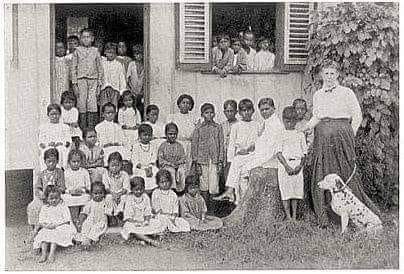
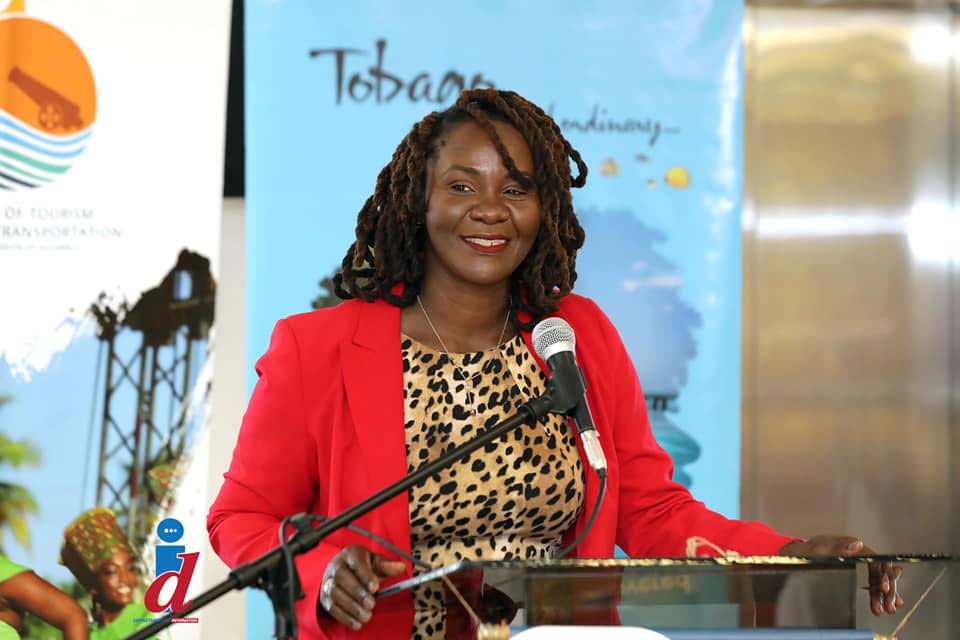
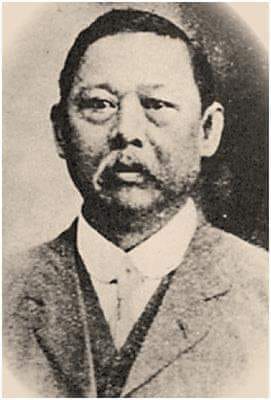
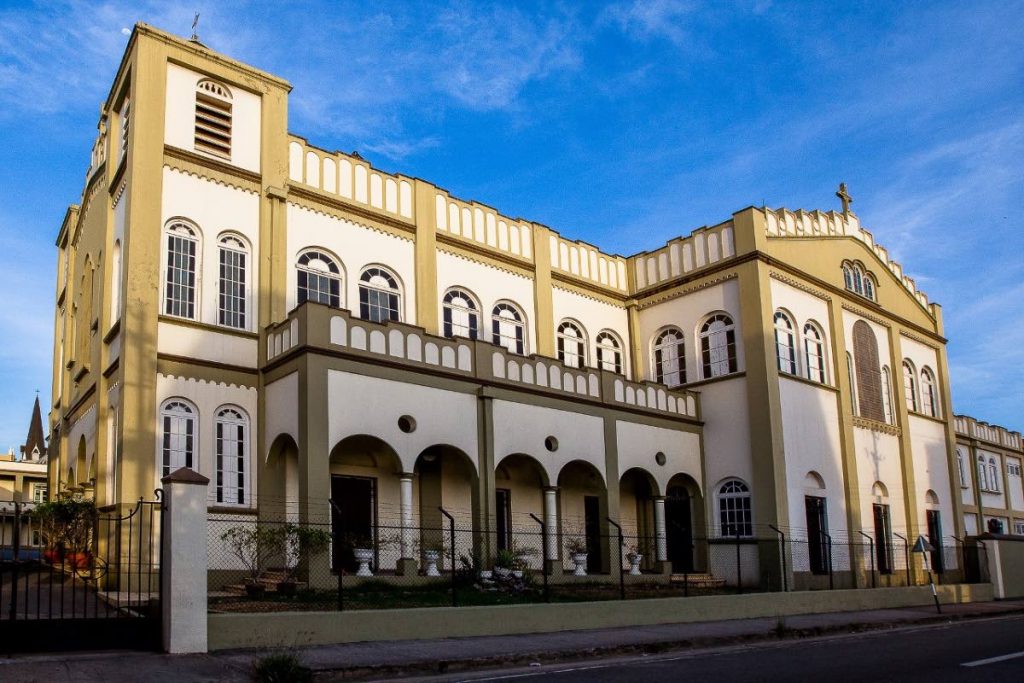
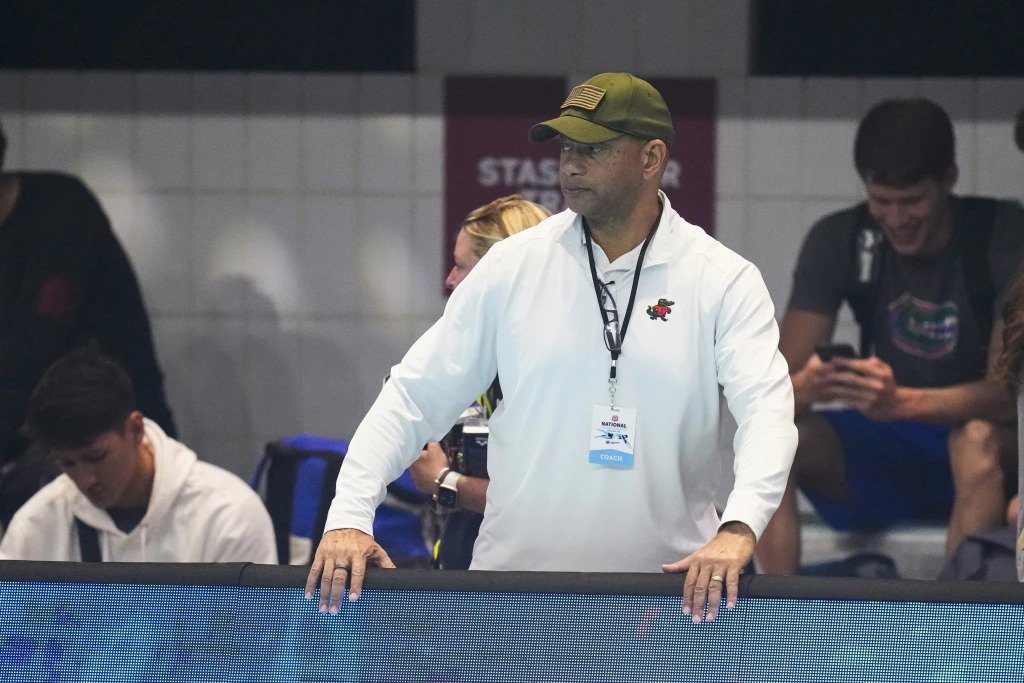
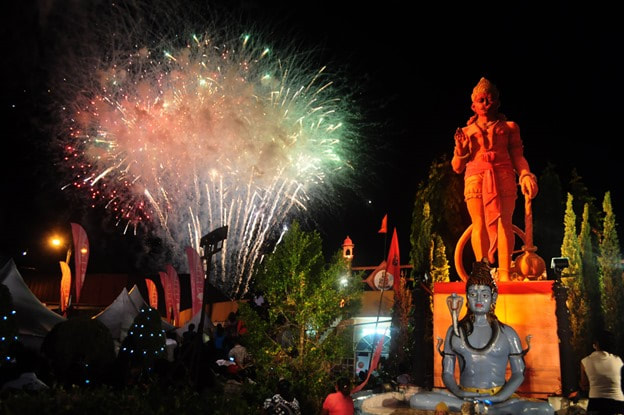
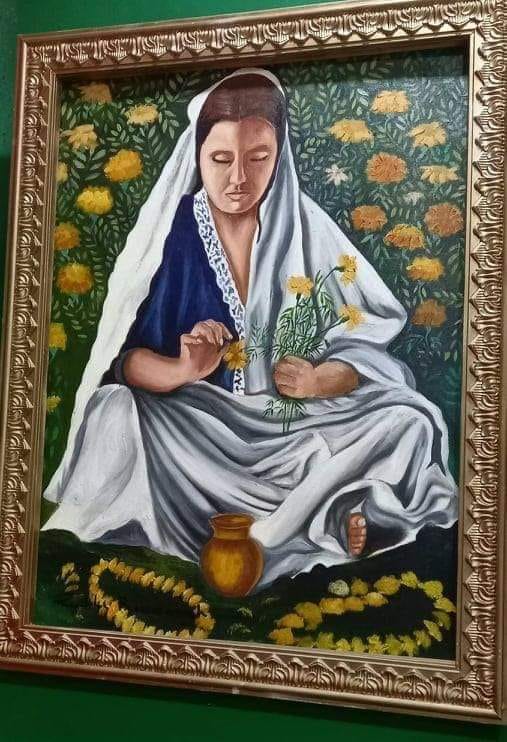
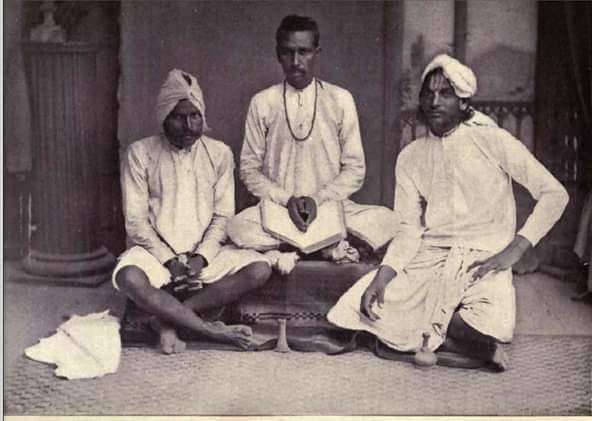
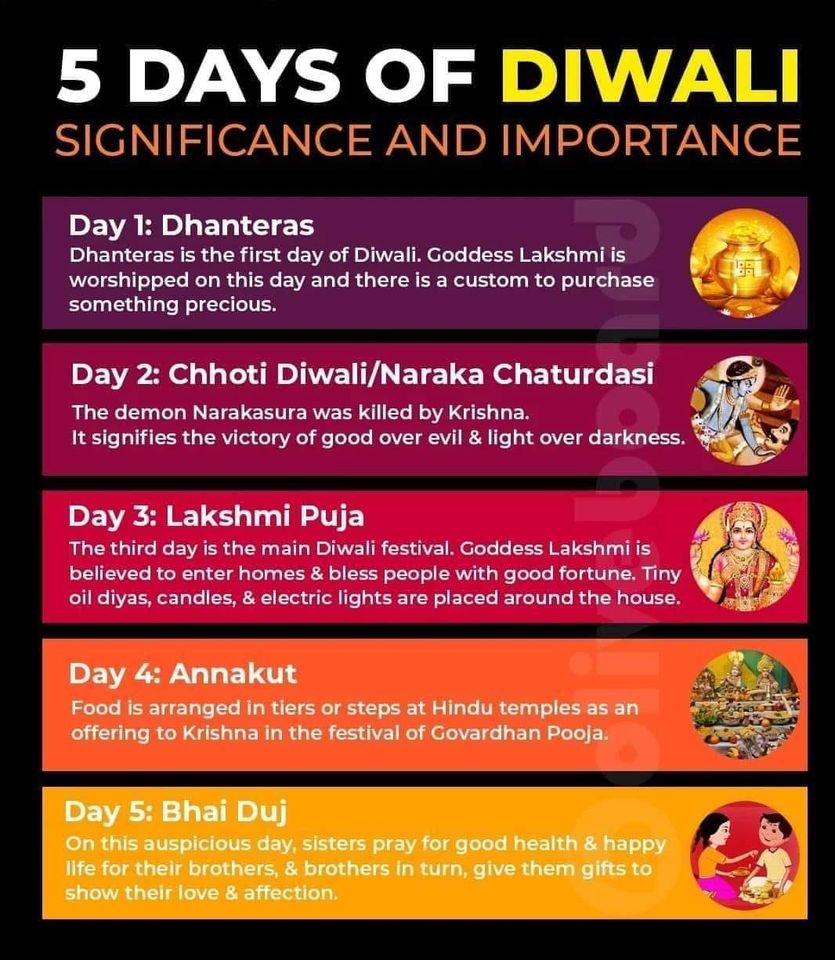

 RSS Feed
RSS Feed